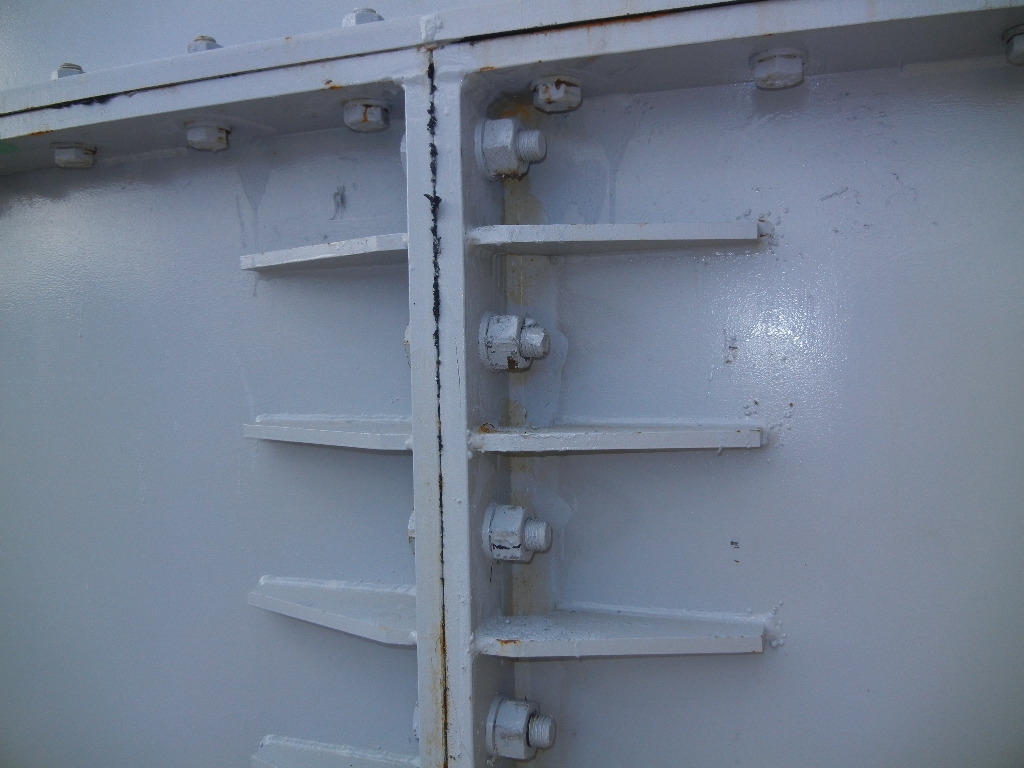Hardly anyone paid attention back then, either to the high beta radiation or to the tank that was assembled instead of welded.
Here's from my post on February 3, 2012 (Original Nikkei article is in Japanese, which is in my original post):
From Nikkei Shinbun (2/3/2012):
TEPCO announced on February 3 that the water leaked from one of the contaminated water storage tanks at Fukushima I Nuclear Power Plant. 2,000 millisieverts/hour beta radiation was detected. The amount of the leak was small, and there was no leak into the ocean. The leak stopped when the bolt was further tightened. The radiation was then shielded with acrylic plates, and the beta radiation dropped to 15 millisieverts/hour.
The bolt may have gotten loose at the joint of a storage tank that stores the contaminated water that was condensed by the desalination apparatus (Reverse Osmosis), letting the water leak. TEPCO said a large amount of radioactive strontium might be in the water. On the concrete where the leaked water was, 22 millisieverts/hour gamma ray was also detected in addition to the beta radiation. It dropped to 1 millisievert/hour after shielding.
In TEPCO's photo from February 3, 2012, you can see the packing in between the sheets up close.
(Click to enlarge)




 Tokyo Time
Tokyo Time
![[Most Recent Quotes from www.kitco.com]](http://www.kitconet.com/charts/metals/gold/t24_au_en_usoz_2.gif)


5 comments:
When tepco say that the latest leak was 1800 mSv of beta radiation I wonder a couple of things:
1) the fact that it's beta radiation indicates what exactly - that is was a leak from the water taanks rather than an upwelling of groundwater in contact with the underground corium?
2) how do we know that tepco is telling the truth. They could easily tell us its beta radiation now but gamma and alpha later. They'd likely say 'we're sorry, that was a mistake'.
3) can beta radiation give off x-rays or other radiation by colliding with ambient materials?
nice post thanks for posting
According to the BBC (http://www.bbc.co.uk/news/world-asia-23919150) the reason why they have now detected 1800mSv/hr is not because of the especially radioactive nature of these new leaks but because they are now using equipment capable of detecting high radioactivity levels wheraeas before they were using equipment only able to detect up to 100mSv/hr. So these radioactivity levels could have been this high all along, over the full 2.5 years of the accident.
We also know that the nuclear cores were exploded distributing plutonium and other rods all over the site and further afield which as initially piled up into small piles around the plant, allegedly to reduce the surface radioactivity rates to enable workers to work onsite. So there is raw fuel all over the site on the ground. The true rates must, unless my common sense is wrong, be enormous at innumerable places all over the site.
According to enenews (http://enenews.com/nuclear-chemist-fukushima-plant-is-like-a-minefield-now-1800-milliseiverts-per-hour-detected-in-four-spots) beta radiation is very often accompanied by gamma radiation, at what levels/ratios I'm not sure.
I have the impression and have had for at least a year that this drip-drip of information is designed to gradually introduce the world to the truth that the melted fuel has escaped into the earth the and situation is most likely not recoverable. We have a worst-case scenario.
I also read an analysis which I can no longer find by someone who claimed that the reactor 4 fuel pool has already been destroyed and aerosolised, thus the extinction life event which some fear from incompetent handling of that pool has in fact already happened. This claim was not simply asserted but backed by an analysis which may or may not be valid. I would be interested in ex-skf's take on all these things.
I remember early on there was some controversy over whether the TEPCO-provided pictures of the interior of SPF 4 were actually of 4. Many said it looked much too clean and orderly, and was of some other spent fuel pool in a cover up of the real damage.
Really useful and informative content. I like this post and love to share it with those they need to read it because they can get too useful information from here.
Pneumatic
Post a Comment